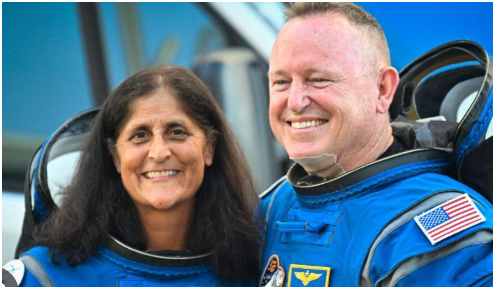NASA Accelerates Crew 10 Launch, Forces Early Return for Sunita Williams and Butch Wilmore
As Crew 9 prepares for their return, their accomplishments on the International Space Station (ISS) are a testament to the groundbreaking work being done in the field of space exploration. Over the course of their mission, Williams, Wilmore, and their fellow astronauts have participated in a variety of experiments and projects that contribute to our understanding of life in space, the effects of long-term space travel on the human body, and the potential for sustaining life beyond Earth. Their time aboard the ISS has not only provided invaluable scientific data but has also fostered international collaboration, with astronauts from different countries working together toward shared goals.
One of the key areas of research conducted by Williams and Wilmore has focused on the impact of microgravity on human health. Studies in this area are crucial for planning long-duration missions to the Moon, Mars, and beyond. Understanding how the human body responds to space conditions will be vital for developing countermeasures to ensure astronaut health on future missions. Research into bone density loss, muscle atrophy, and changes in the cardiovascular system has already led to important insights, and these studies will continue to evolve with every new crew rotation on the ISS.
Another significant aspect of Crew 9’s mission was their involvement in experiments aimed at advancing space technology. From testing new life support systems to experimenting with autonomous systems for spacecraft and crew management, the ISS has served as a laboratory for innovations that could eventually shape the future of space travel. NASA’s partnerships with private space companies, such as SpaceX, have also played a pivotal role in delivering new technologies to the station, allowing astronauts to test and refine tools that will be essential for future deep-space exploration.
Williams and Wilmore’s mission also contributed to the expansion of knowledge in other fields, such as materials science and biotechnology. The microgravity environment aboard the ISS allows for unique experiments that are not possible on Earth. These experiments have led to the development of new materials, drugs, and technologies that could have far-reaching applications in industries such as healthcare, energy, and manufacturing. By investigating how materials behave in space, scientists are uncovering new properties that could revolutionize how we design everything from electronics to spacecraft.
The Crew 9 mission also reinforces the importance of international cooperation in space exploration. The ISS, a joint project between NASA, Roscosmos, ESA, JAXA, and CSA, serves as a shining example of how countries can work together to achieve common goals. The shared commitment to advancing human knowledge and expanding our presence in space has created a unique platform for collaboration, where astronauts from different nations can live and work together in harmony. This cooperative spirit will be essential as humanity sets its sights on future missions to the Moon, Mars, and beyond.
In the wake of the announcement regarding the early return of Crew 9, NASA continues to emphasize the importance of space exploration in its broader strategy. With the goal of building a sustainable presence on the Moon by the end of this decade, NASA is actively preparing for the challenges of deep-space exploration. The lessons learned from missions like Crew 9’s are invaluable in shaping the agency’s approach to future endeavors. From the technological advancements gained through experimentation on the ISS to the human health data collected during long-duration flights, each mission provides critical insights that will inform the next steps in space exploration.
NASA’s ambitious goals, including missions to the Moon and Mars, are increasingly within reach. With each mission, whether it’s a successful launch, a critical spacewalk, or a new scientific breakthrough, the agency is steadily laying the groundwork for humanity’s future in space. As Sunita Williams, Butch Wilmore, and their fellow NASA astronauts return to Earth, they leave behind a legacy that will continue to inspire and shape the future of exploration.
Stay informed with the latest updates – click here .

